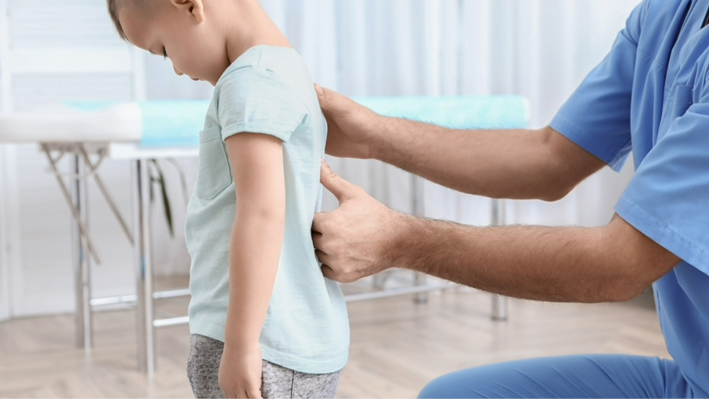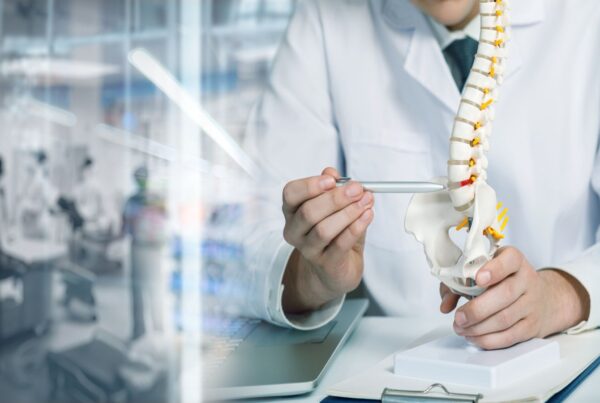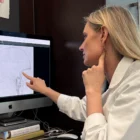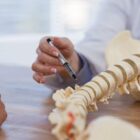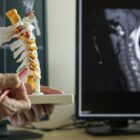Pediatric Scoliosis: Symptoms, Diagnosis and Treatment
Pediatric scoliosis is a condition that affects the curvature of a child’s spine. It’s essential for parents and caregivers to be informed about this condition, its types, and available treatment options.
In this article we will explore pediatric scoliosis, including symptoms, diagnosis, treatment options for scoliosis.
Types and Causes of Pediatric Scoliosis
Pediatric scoliosis, a curvature of the spine that appears in children, is broadly categorized into three types: congenital, neuromuscular, and idiopathic.
Congenital Scoliosis
Some children are born with scoliosis, known as congenital scoliosis. This condition results from abnormal spinal development in the womb.
Neuromuscular Scoliosis
Neuromuscular scoliosis is associated with underlying medical conditions like cerebral palsy or genetic conditions like muscular dystrophy. It can develop because of muscle imbalance or weakness affecting the spine’s stability.
Idiopathic Scoliosis
Adolescent idiopathic scoliosis is the most common type of scoliosis in children. Its cause remains unknown, and it typically emerges during a child’s growth spurt, between ages 10 and 18. It is more common in young women than men.
Symptoms and Diagnosis
Common symptoms of scoliosis include uneven shoulders, an asymmetrical waistline, and a noticeable spinal curvature. Back pain is uncommon unless the spinal curvature is severe. A healthcare provider may diagnose scoliosis through a physical examination and X-rays.
The magnitude of curvature is measured in degrees, with 10 to 20 degrees considered mild, 20 to 45 degrees moderate, and over 50 degrees severe
It's time to get back
to doing what you love.
Treatment Options for Pediatric Scoliosis
Conservative Treatment Options
Observation
For mild scoliosis or when the child is almost done growing, observation may be the chosen approach in most cases.
Physical Therapy
Doctors may recommend Schroth physical therapy, a specific type of scoliosis physical therapy that focuses on spinal balance. Some studies have shown that Schroth physical therapy can stabilize or even reverse cases of mild and moderate scoliosis.
Wearing a Brace
Doctors may recommend a brace for moderate cases of scoliosis. The goal is to prevent the curvature from worsening as the child continues to grow. The child’s spine surgeon will determine the type of brace and the duration of wear.
When worn properly, bracing has been shown to be very effective in decreasing the progression of scoliosis and the need for surgery in children with adolescent idiopathic scoliosis.
Surgical Treatment
Surgery for Severe Curvatures
If the spinal curvature exceeds 45-50 degrees and continues to progress, surgery may be recommended. Surgical procedures vary but most often involve spinal fusion to correct the curvature and stabilize the spine.
Vertebral Body Tethering
A newer surgical option for pediatric scoliosis is vertebral body tethering. This minimally invasive procedure uses a flexible cord to guide the spine’s growth while maintaining flexibility, but complications and additional surgery are more common than with fusion surgery.
Monitoring Growth and Skeletal Maturity
The timing of treatment for pediatric scoliosis is critical. A child’s spine continues to grow until they reach skeletal maturity, which typically occurs after puberty and is highly variable among children.
Treatment plans are often based on the child’s age, the degree of curvature, and the potential for further progression.
Hope and Long-Term Outlook
Pediatric scoliosis is a challenging condition, but with timely diagnosis and appropriate treatment, most children lead healthy, active lives. Regular follow-up with a pediatric spine specialist is crucial to monitor the condition and adjust the treatment plan as needed.
The Role of Physical Therapy
Physical therapy plays a vital role in the treatment of pediatric scoliosis.
Therapists work closely with the child to create a customized exercise program to address thier specific needs, ensuring optimal progress during treatment.
For children prescribed a brace or those who have undergone surgery, physical therapy helps maintain flexibility, build strength in the spine and surrounding muscles, and promote overall musculoskeletal health.
Long-Term Monitoring and Skeletal Maturity
Pediatric scoliosis is a dynamic condition that can evolve as a child grows. Monitoring is essential, and regular follow-up appointments with a pediatric spine specialist are crucial to assess the progression of the curvature and adjust the treatment plan as needed.
The goal is to initiate and continue treatment before the child reaches skeletal maturity to maximize the potential for a successful outcome.
Emotional Support
Coping with pediatric scoliosis can be challenging for both the child and their family. It’s important to provide emotional support throughout the treatment journey. Encouraging open communication, addressing concerns, and involving the child in decision-making can help them feel more in control and reduce anxiety related to their condition and treatment.
Looking to the Future
While pediatric scoliosis presents unique challenges, it’s important to remember that most children with this condition lead healthy and fulfilling lives.
With early detection, appropriate treatment, and ongoing support, the goal is to provide children with the opportunity to thrive.
Supporting Your Child’s Education
It is important to ensure that your child’s education is not disrupted during their scoliosis journey. Talk to your child’s school about any changes they might need, like more time between classes or a comfy chair. Maintaining a sense of normalcy in their academic life can boost their confidence and overall well-being.
Advocating for Your Child
Be an advocate for your child’s health and well-being. Stay informed about their condition, treatment options, and progress. Ask questions during medical appointments and seek second opinions when necessary to ensure that your child receives the best care possible.
Celebrating Achievements
Throughout the scoliosis journey, celebrate your child’s achievements, both big and small. Whether it’s a successful physical therapy session, reaching a treatment milestone, or simply facing their condition with resilience, acknowledging their efforts fosters a positive mindset and a sense of accomplishment.
Conclusion
Understanding pediatric scoliosis is the first step toward effective treatment and a brighter future for your child. Whether it’s adolescent idiopathic scoliosis, congenital scoliosis, neuromuscular scoliosis, or any other type of scoliosis, there are treatment options available.
If you think your child may have scoliosis or have already received a diagnosis, contact our office today to schedule a consultation with one of our pediatric spine neurosurgeons.
We can discuss the most suitable treatment plan and provide your child with the best possible care and support.
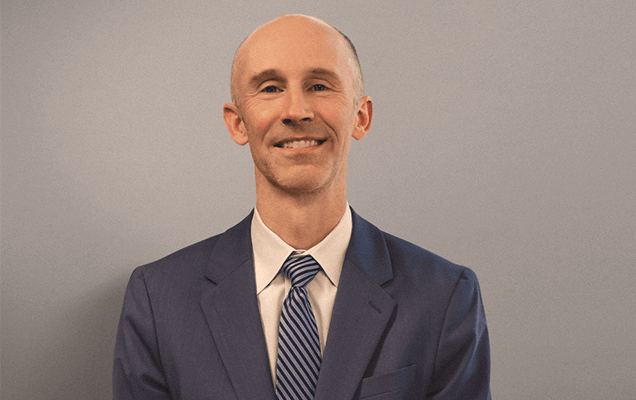
About Dr. Richard C.E. Anderson
Dr. Richard Anderson is recognized as one of the top, award-winning pediatric neurosurgeons in the Tri-State region. He practices out of Neurosurgeons of New Jersey's Central and North Jersey locations including the Ridgewood, Livingston and Paterson offices. Utilizing the most innovative, proven technology, Dr. Anderson specializes in the treatment of pediatric brain and spinal disorders by means of minimally invasive surgeries and complex surgeries when appropriate. With over 250 publications, invited lectures, TV, and magazine interviews, Dr. Anderson is consistently named one of America’s Top Doctors, America’s Top Surgeons, Favorite Kid’s Doctors in NJ, and recipient of Patient’s Choice Award. He is currently accepting new patients.

